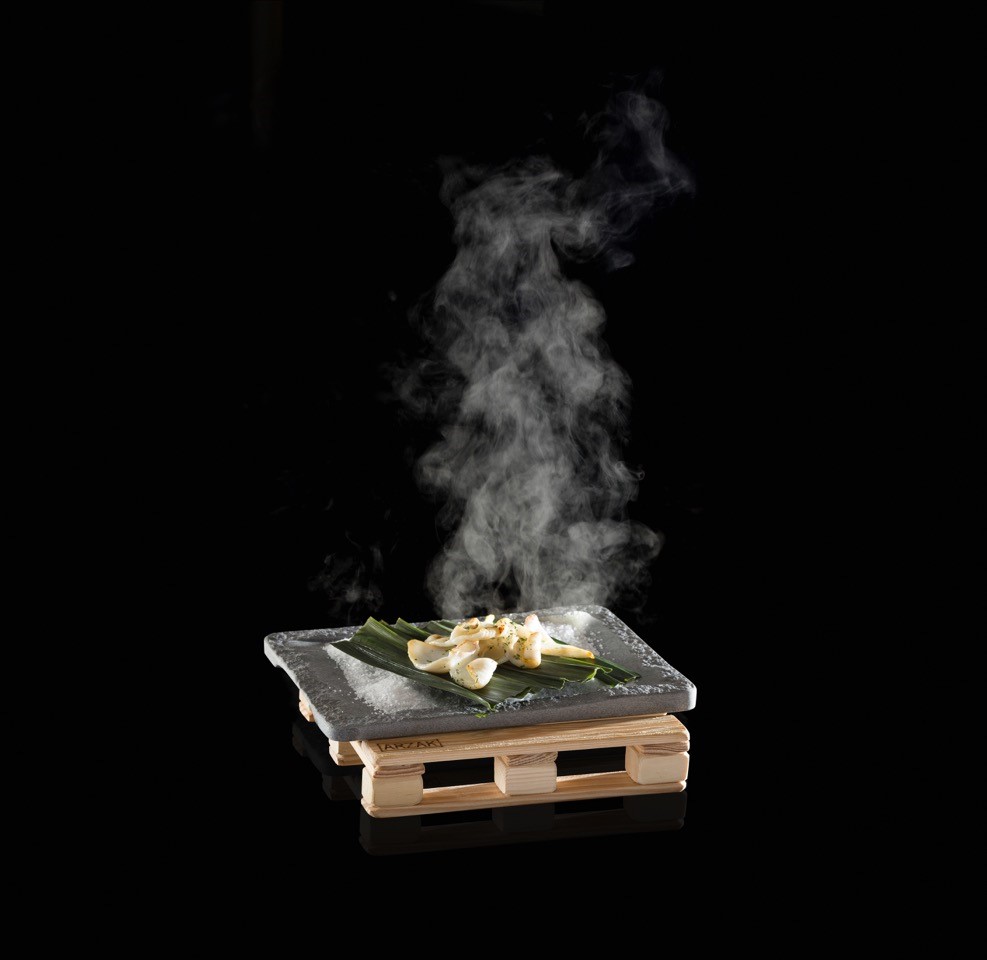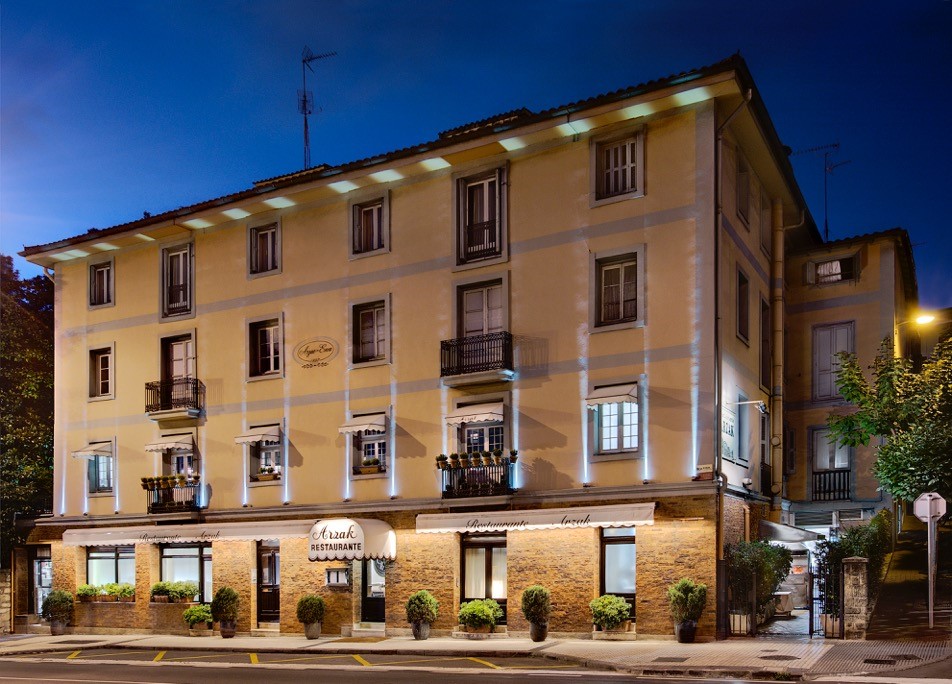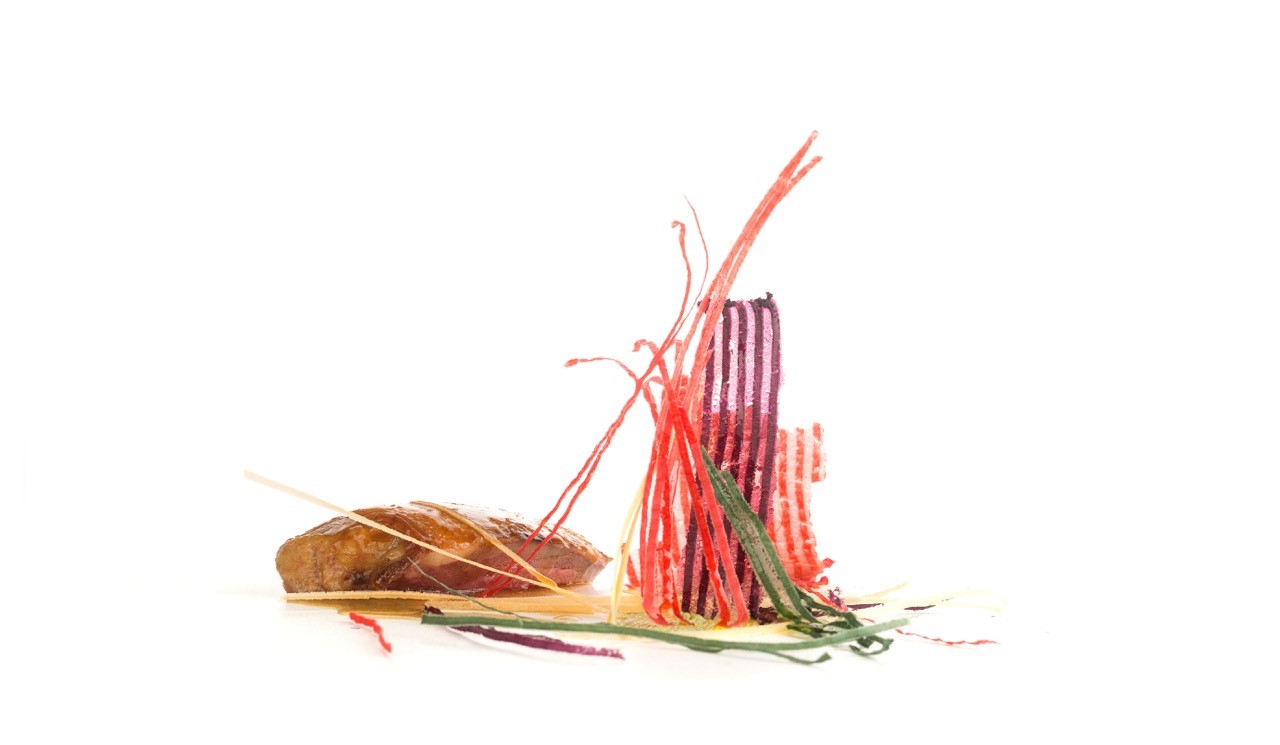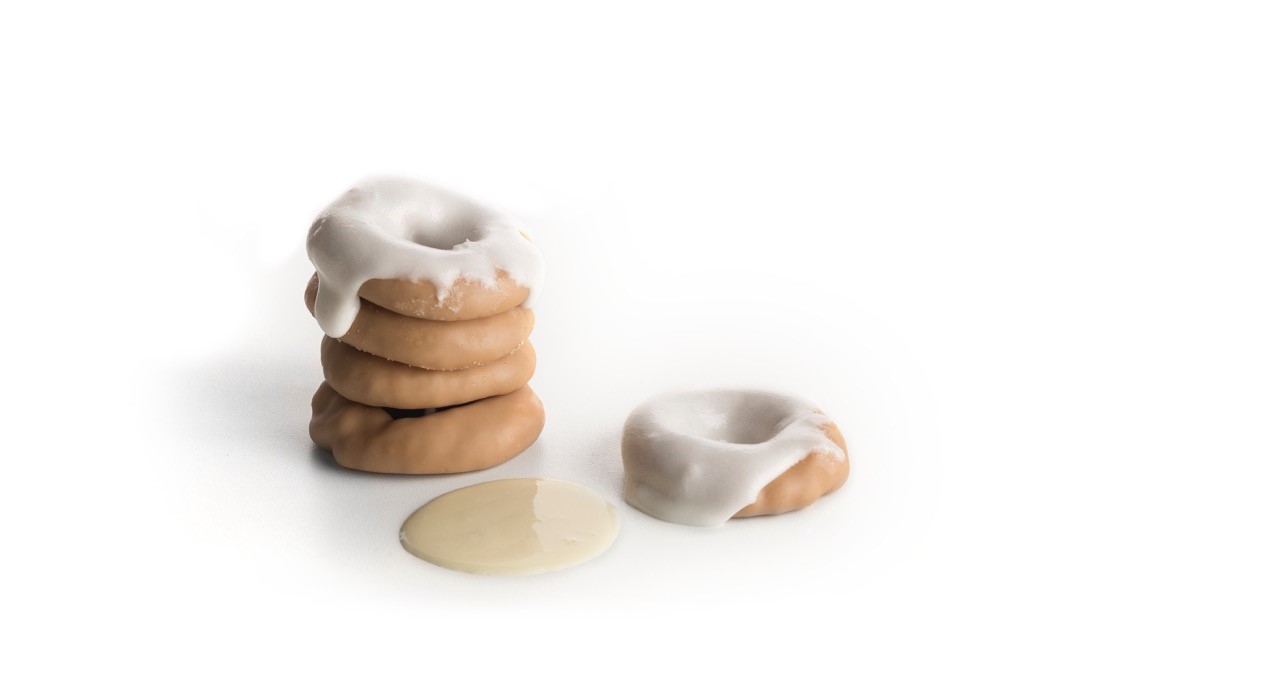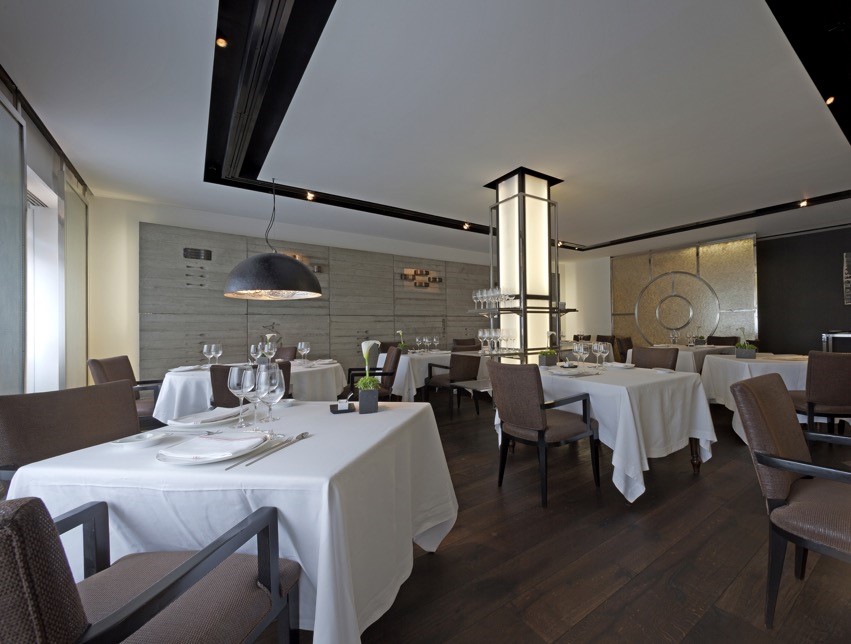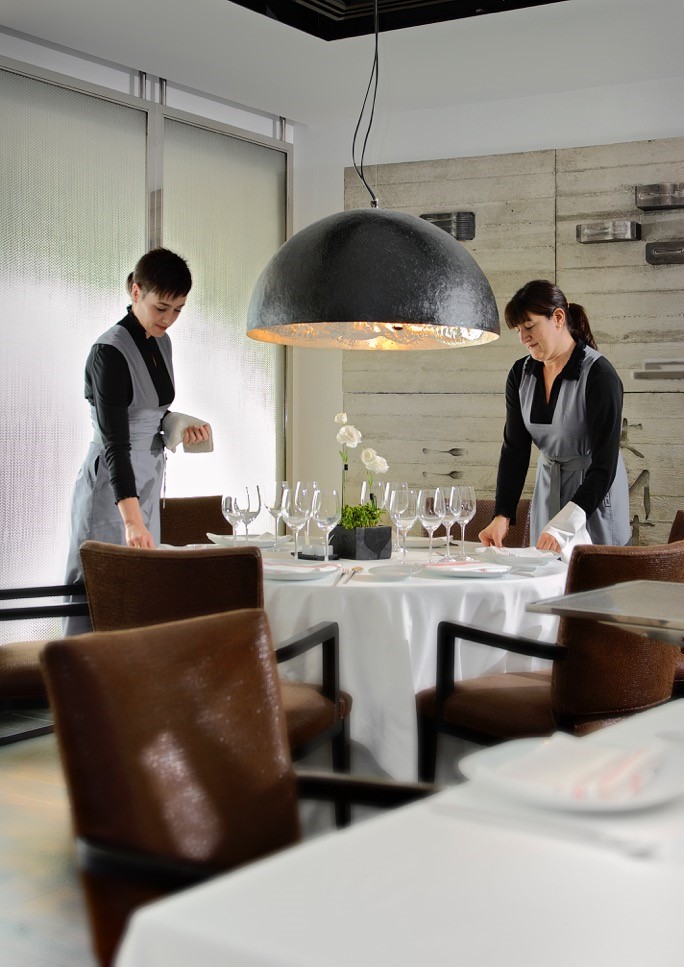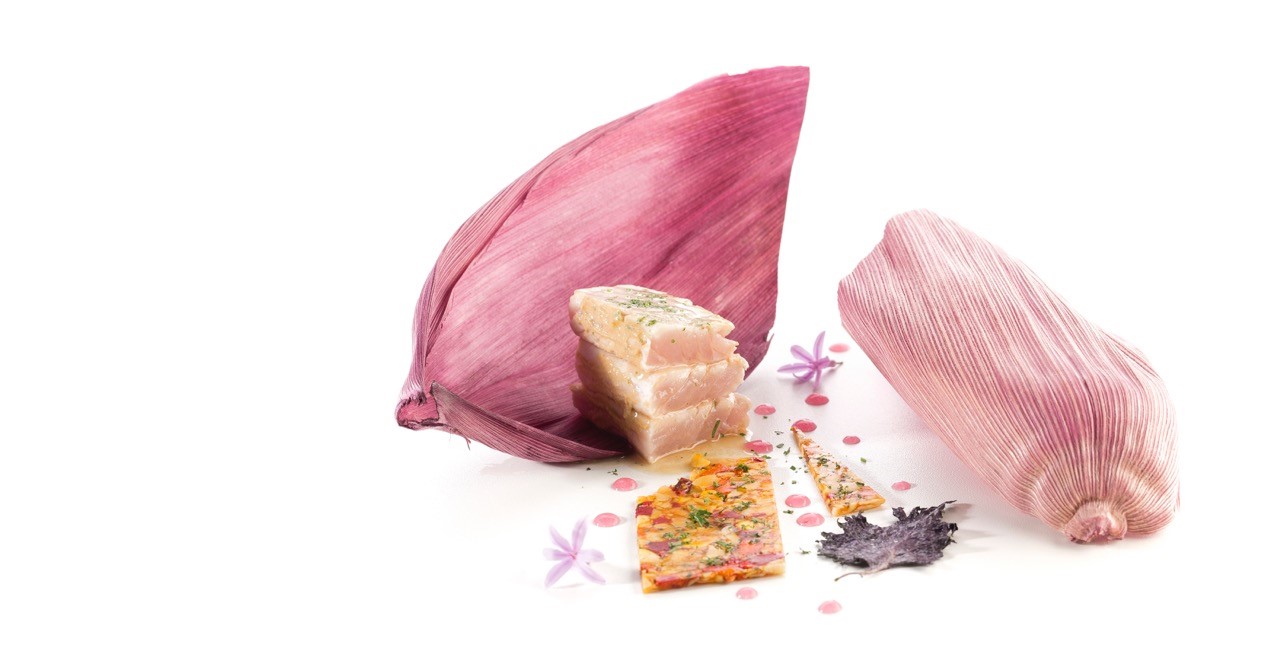Under crisp white linen, the chef’s table at Arzak is made of marble. It doubles as a prep station—an extension of the kitchen when not seated.
An endless parade of staff marches up the narrow staircase, serving the 50 or so guests in the dining room. Hoisted upon their shoulders are cookie-sheet-sized trays precariously balancing plates as exquisite as they are delicious.
There is a surreal calmness in the San Sebastián restaurant’s kitchen; the only sounds (beyond the revelry of guests at this select table) are those of a well-oiled galley. Chef Elena Arzak breezes in and out, all sparkling eyes and wide smile; she’s a tiny package of energy, belying her 47 years. Elena presides over the kitchen but also moves back and forth to the dining room, greeting guests. However, with apparent admiration, despite her equaled accomplishments and his semi-retirement, Elena still refers to her famous father, Juan Mari Arzak, as chef.
As cooks, the history of the Arzaks dates back to 1897. On the outskirts of San Sebastián, José Maria Arzak Extabe and his wife Escolástica Lete (the grandparents of Juan Mari) built a house that also served as a wine cellar and tavern. They then turned it into a restaurant, which quickly gained local recognition. Its reputation continued to flourish under Juan Mari’s mother, Francisca Arratibel, and then under Juan Mari himself, when he joined her in the 1960s.
The 1970s gave birth to a Basque culinary revolution—a movement Juan Mari was instrumental in. Arzak received its first Michelin star in 1974, followed by a second in 1977. Despite this, Juan Mari continued taking internships in France during the late 1970s and early 1980s, and the country’s nouvelle cuisine had significant impact on his own cooking style. The results were a lighter, less rustic, and more artfully presented tone to his beloved Basque dishes. Ultimately, Juan Mari received a coveted third Michelin star in 1989; Arzak was the first restaurant in Spain to do so, and has since maintained all three.
And so, cooking is in Elena’s blood. “I was very close to the restaurant,” she says. “Since age 11 I have [worked] here. I always knew what I wanted: to be in the ambiance of the restaurant.” After studying in Switzerland and France, Elena joined her father in 1995. His words resonated: “Elena, if you are going to be here with me, please, you must do as much as possible.” She took this to heart, taking internships at some of Europe’s best restaurants in Zurich, Paris, London, and Milan, and with Ferran Adriá at Spain’s famed El Bulli.
While the fruit doesn’t fall far from the tree, Elena’s cooking leans toward simplicity; she works with more intensity yet fewer ingredients than her father, who is very modern in his style. Elena’s plating, however, shows courageous artistic flare. “You need to be creative and look at the world through the eyes of a chef,” she explains. “I see a flower, and it can give me an idea for a dessert. A colour, a shape, can give me an idea for a design.” A crushed beer can, a birdcage, coiled wire, or wooden Jenga-like structures are all fair game when plating her creations.
What is effortlessly delivered to each table is first curated above the kitchen, in the Arzak lab. The room resembles a cross between a science class and a crafts studio. A wall of nearly 1,000 clear plastic containers (boasting colourful contents of edible ingredients gathered from around the globe) wrenches attention away from the more clinical molecular gastronomy toys. The lab employs four chefs who, each year, under the direction of Elena and her father, develop roughly 50 new elements. “It could be a garnish, a new plate, or ice cream,” Elena says. “It’s a lot of work. We have relatives, friends, and well-known guests who taste and give feedback.”
With mainstream knowledge of gastronomy widely embraced across continents and socio-economic statuses, the urgency to stay relevant and innovate has expanded. “Si, a little pressure is always good,” Elena admits. “As humans we need pressure, but it should not collapse and blind you. Arzak has always had the capacity to evolve—we don’t cook like we did 20 years ago, or even 10 years ago.”


